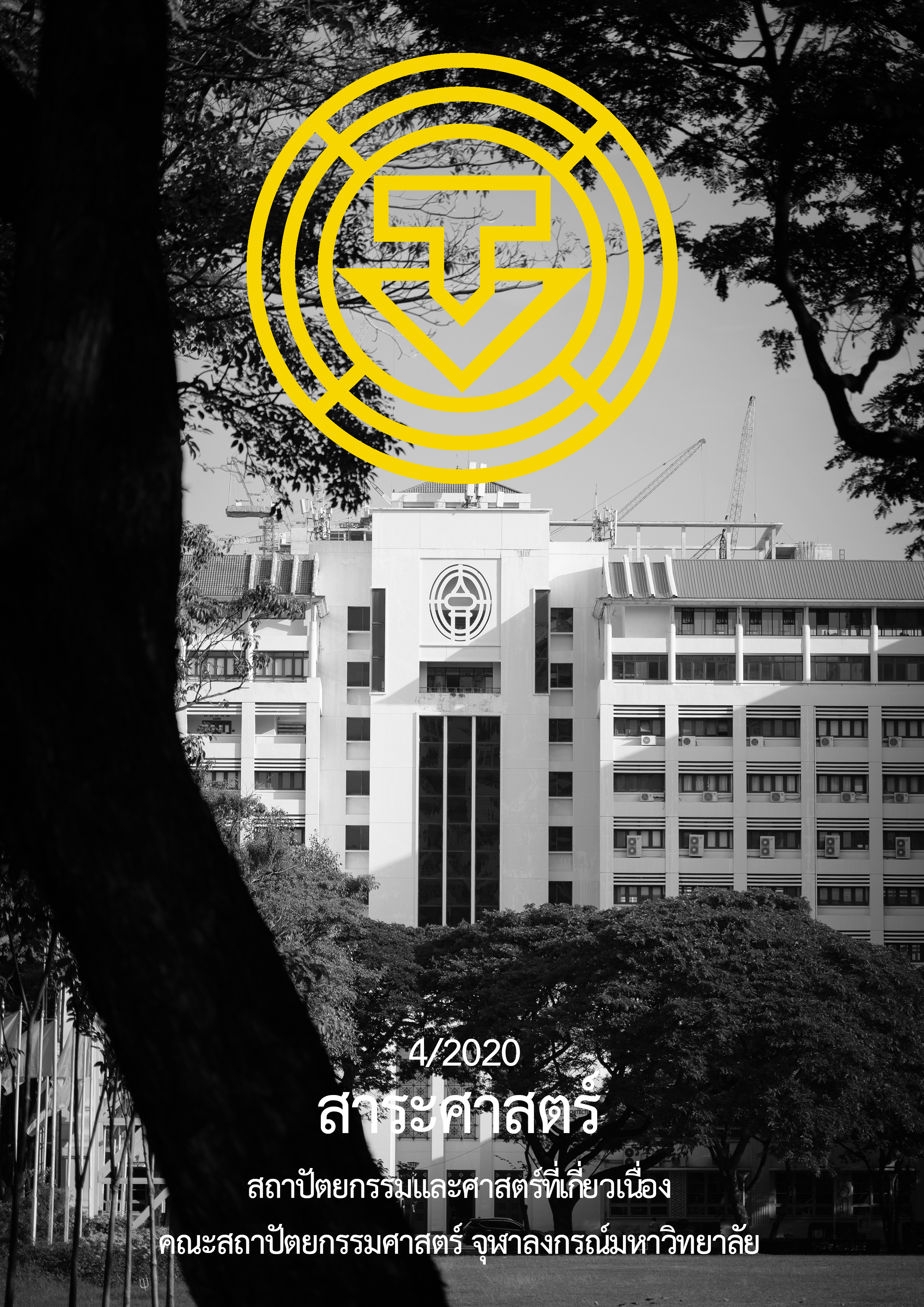Guidelines for Increasing Green Space and Assessing the Potential of Green Space in Vadhana District, Bangkok
Main Article Content
Abstract
Bangkok Metropolitan is growing rapidly. Its constant population growth rate has caused several environmental issues while the city expands in all directions. The reduction of the city’s green space is affecting the ecosystem and health of the residents of Bangkok Metropolitan. The statistic data of Bangkok in 2016 identifies Vadhana as the least green space district which leads to the study to determine GUIDELINES FOR INCREASING GREEN SPACE AND ASSESSING THE POTENTIAL OF GREEN SPACE IN VADHANA DISTRICT, BANGKOK. This research is a study to determine the green space assessment criteria, and identify potential areas to set the priority levels for the analysis to link and develop the green space network in Vadhana District.
The analysis result identifies 86 potential green spaces which 76 of them are the existing green spaces such as parks, green and open spaces in government offices, temples, hospitals, schools, markets, museums and outdoor stadiums or golf courses, and 10 of them are abandoned areas, areas under the expressway and unused spaces in cemeteries. The 5 assessment criteria for the existing green spaces are the land ownership and public usage level, accessibility, land size, ecosystem, usage and activity diversity. For the potential green spaces, there are 4 assessment criteria without the usage and activity diversity factor because most of them are undeveloped lands or not fully used. The green space assessment result in Vadhana District identifies 24 high potential spaces, 48 medium potential spaces and 14 low potential spaces.
Article Details
References
กระทรวงทรัพยากรธรรมชาติและสิ่งแวดล้อม. สำนักงานนโยบายและแผนทรัพยากรธรรมชาติและสิ่งแวดล้อม. (2548). คู่มือพัฒนาพื้นที่สีเขียว. เชียงใหม่: โทนคัลเลอร์.
กระทรวงทรัพยากรธรรมชาติและสิ่งแวดล้อม. สำนักงานนโยบายและแผนทรัพยากรธรรมชาติและสิ่งแวดล้อม. (2560). แนวทางการจัดการพื้นที่สีเขียวสำหรับชุมชนเมืองในประเทศไทย. กรุงเทพมหานคร: มูลนิธิสถาบันสิ่งแวดล้อมไทย.
บริษัท ฉมา จำกัด. [ม.ป.ป.]. Bangkok Green Link. สืบค้นเมื่อ 29 ตุลาคม 2562, จาก https://www.facebook.com/pg/ Shmadesigns/photos/?tab=album&album_id=2773095662715147&ref=page_internal
ภราดร แก้วไสพร. (2558). การหาพื้นที่ที่มีศักยภาพในการพัฒนาเป็นพื้นที่สีเขียวของเขตดินแดง. วิทยานิพนธ์ปริญญามหาบัณฑิต, จุฬาลงกรณ์มหาวิทยาลัย).
ภาวิณี อินชมภู และ สืบสิริ ศรีธัญรัตน์. (2560). การพัฒนาโครงข่ายพื้นที่สีเขียวในกรุงเทพมหานคร. วารสารวิชาการคณะสถาปัตยกรรมศาสตร์ จุฬาลงกรณ์มหาวิทยาลัย, 66, 99-120.
สำนักงานเขตวัฒนา กรุงเทพมหานคร. [ม.ป.ป.]. ข้อมูลทั่วไป เขตวัฒนา. สืบค้นเมื่อ 29 ตุลาคม 2562, จาก http://www.bangkok.go.th/vadhana/index
สำนักงานนโยบายและแผนทรัพยากรธรรมชาติและสิ่งแวดล้อม [สผ.]. [ม.ป.ป.]. มาตรฐานของพื้นที่สีเขียว. สืบค้นเมื่อ 29 ตุลาคม 2562, จาก http://www.onep.go.th/eurban/plant/green_area_standart.php
สำนักยุทธศาสตร์และประเมินผล กรุงเทพมหานคร. (2557). แผนพัฒนากรุงเทพมหานคร ระยะ 20 ปี (พ.ศ. 2556 – 2575) “มหานครแห่งเอเชีย.” สมุทรสาคร: พิมพ์ดี.
สำนักยุทธศาสตร์และประเมินผล กรุงเทพมหานคร. (2559). สถิติ 2559 กรุงเทพมหานคร. กรุงเทพฯ: สำนักงานพระพุทธศาสนาแห่งชาติ.
สำนักสิ่งแวดล้อม กรุงเทพมหานคร. ฐานข้อมูลและระบบติดตามประเมินผลการเพิ่มพื้นที่สีเขียวของกรุงเทพมหานคร. สืบค้น 15 กันยายน 2562, จาก http://203.155.220.118/green-parks-admin/


